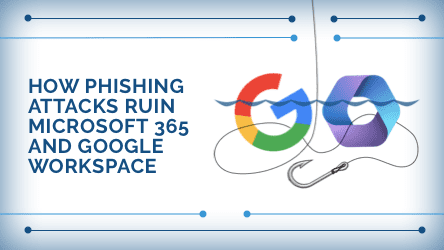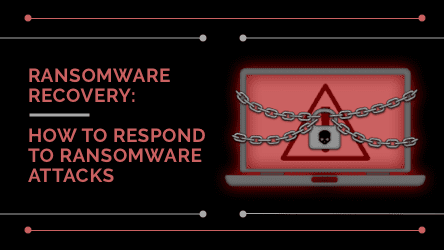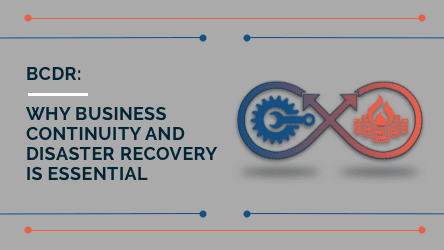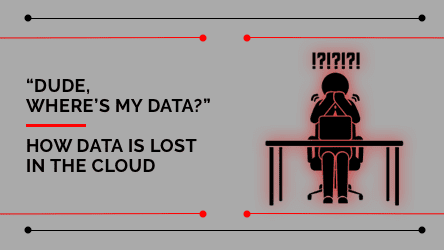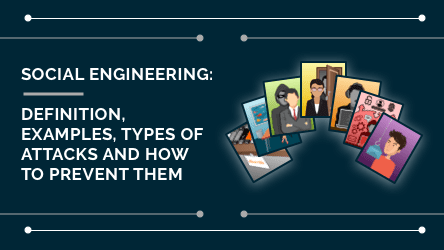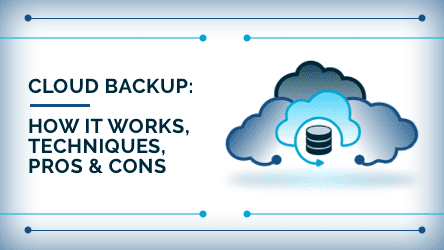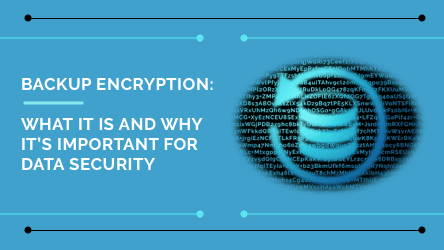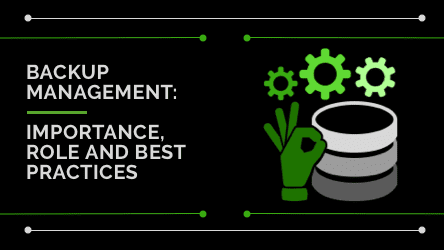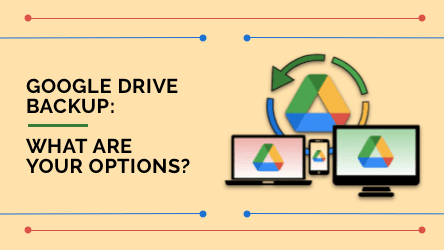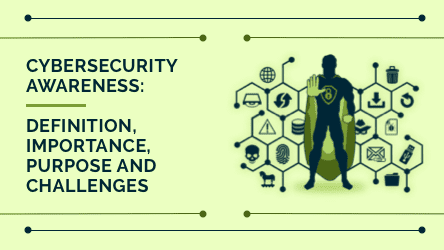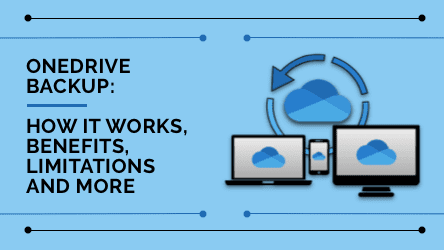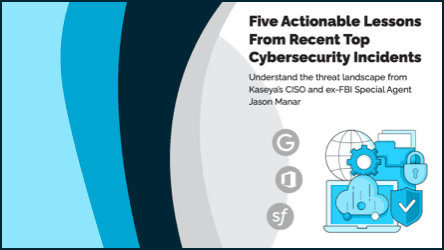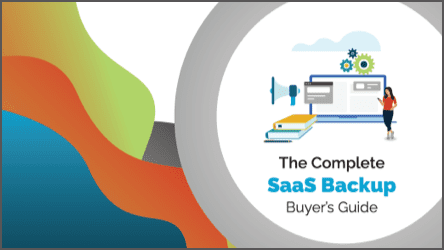Spanning Backup: The Best of 2022
2022 has been a significant year for Spanning Backup. With Software-as-a-Service (SaaS) applications becoming mainstream in these post-pandemic times, we focused on ensuring your organization can securely back up and protect all of your critical SaaS data. The traffic and readership for our blogs also increased exponentially compared to previous years. It has been an incredibly rewarding experience to see our content receive so much appreciation from our readers.
With 2023 right on our doorstep, it’s time to hit the rewind button and look back at the blogs and resources our readers enjoyed the most in 2022.
Spanning’s most popular blogs of 2022
From phishing and ransomware attacks wreaking havoc on SaaS applications to different ways of backing up data in the cloud, here’s a brief recap of the top 10 most-read blogs produced by Spanning in 2022.
Honorable mention: Phishing campaigns designed to ruin Microsoft 365 and Google Workspace
SaaS applications are changing the way we work as organizations are gradually migrating their mission-critical data to the cloud. While this paradigm shift has propelled the popularity of Microsoft and Google as SaaS offerings, it has also created safe avenues for security threats like ransomware attacks to creep in and put SaaS data in danger. One of the top threat vectors used by cybercriminals to carry out ransomware attacks on organizations is phishing. Our blog sheds light on the various phishing campaigns designed to disrupt Microsoft 365 and Google Workspace environments.
#10. Responding to ransomware attacks the right way
Ransomware attacks show no signs of slowing down. Q2 of 2022 experienced a steep rise in ransomware activity compared to Q1. With open-source ransomware programs and Ransomware-as-a-Service (RaaS) now readily available to anyone, the volume of ransomware attacks is expected to increase further in the future.
The most formidable defense systems are not safe anymore as they are susceptible to sophisticated, highly-targeted ransomware attacks. What is the way out of this mess? Is paying a ransom the solution? Read our blog on ransomware recovery to get answers to these questions and more.
#9. BCDR: Reinforcing your disaster recovery plan to ensure backup continuity
Data loss in the cloud today is inevitable. According to a recent study, 89% of the organizations surveyed store sensitive data in the cloud. Given the large volume of data hosted in the cloud, a data loss incident can have a catastrophic impact on an organization. Time is a crucial aspect when it comes to recovering from a data loss incident. The longer an organization takes to locate and restore its files post-incident, the greater the financial and reputational implications. Zero downtime is what most organizations strive for, and a comprehensive business continuity and disaster recovery (BCDR) response plan can guide them towards that goal. Get a glimpse of the BCDR world and discover how important it is for an organization to have a BCDR plan.
#8. The ‘not so’ curious case of SaaS data loss in the cloud
The increasing popularity of SaaS applications has pushed companies to spend hefty amounts on public cloud services. As per estimation, 99% of companies on the market use at least one SaaS solution in their day-to-day operations. With such a massive volume of mission-critical data stored in the cloud today, there is a high risk of data loss due to multiple reasons, including human error, external threats (hackers, ransomware and viruses) and malicious insider activities. Read more about these reasons in detail and find out how to securely back up your precious SaaS data.
#7. All about social engineering techniques
As one of the most prevalent cyberthreats, social engineering is the weapon of choice for cybercriminals because it’s inexpensive and easy to use. More than 90% of cyberattacks rely on some form of social engineering. The global pandemic provided the perfect breeding ground for new, sophisticated social engineering tactics. The transition from face-to-face communication to digital mediums, which are goldmines for cybercriminals, allowed social engineering threats to increase by a whopping 270% in 2021.
With the hybrid business model becoming a default in the post-pandemic world, onsite vulnerabilities are making a return. A lower physical presence in the office means less physical security from people. Threat actors can use “classic” social engineering to break into buildings or tailgate their way into an office and easily plug in USB devices with malware on systems. Check out our blog to learn more about social engineering basics, how to spot such attacks and how you can safeguard your data from them.
#6. No data is safe: Cloud backup to the rescue?
There’s been an explosion of data in recent times. Today, collective global data exceeds 40 zettabytes. Not only is it hard to manage such a staggering volume of data, it also introduces new data storage and protection challenges to the business environment. With organizations losing four million files daily, a robust data backup strategy is needed to safeguard mission-critical data from being compromised or lost. This is where cloud backup comes in. Dive deep into the nitty-gritty of cloud backup, explore its modus operandi and see how it can solve the data protection challenges businesses face today.
#5. Encrypting backups: Does it enhance data security?
Company data is an attractive target for threat actors looking to make quick money through cybercrimes and other fraudulent activities. Having a backup in such cases is critical since it provides quick recovery in the event of a cybersecurity incident. However, cybercriminals are now targeting backups, attempting to disable them from functioning or deleting them completely. That’s why backup encryption is critical for the survival of businesses. Read on to know more about backup encryption, its benefits and why it’s more important than ever.
#4. Backup management done right
Data protection challenges are now more complex than ever before. With expected recovery time set in minutes, IT professionals and backup administrators are constantly under pressure to create a reliable and resilient backup strategy that works when disaster strikes. In such circumstances, what backup management best practices can an organization follow to keep its data safe and accessible? Find out in this blog.
#3. Backing up Google Drive: Is it a good option?
Google Drive users often wrongly assume that their documents and files are automatically backed up by storing data online. Although Google is responsible for application uptime and availability, the users are operationally and contractually liable for data protection. Despite being highly secure, Google’s data centers are vulnerable since today’s advanced cyberattacks can penetrate even the strongest defense systems. Other security risks, like human error, unexpected outages, malicious insider activities, ransomware and third-party apps, can also result in data loss from Google Drive. Check out our blog to take a closer look at why it’s important to back up Google Drive, how to do it and more.
#2. Cybersecurity awareness and its significance in today’s evolving threat landscape
Cybersecurity awareness is vital to keep your workforce and business safe and running in today’s ever-evolving threat landscape. Your company’s cybersecurity strategy is only as strong as your weakest link — your employees. That’s why it’s crucial to educate your employees about their role in improving cybersecurity and what they can do to make the digital world more secure. Our blog shares why cybersecurity awareness is essential today and what should be included in the awareness training module.
#1. How to better protect your OneDrive data
OneDrive backup is a cloud service that is a part of the Microsoft 365 productivity suite and allows you to store, sync and share files over the internet. Being a part of Microsoft 365, OneDrive follows the Shared Responsibility Model, where the users are liable for data protection and the vendor acts as a “processor” of the data. Hence, backing up your OneDrive is an excellent way to ensure that your critical data is safe and protected. Learn how to better protect your OneDrive data in our blog.
‘Unputdownable’ Spanning resources of 2022
Apart from the top blogs, a few other resources resonated well with our audiences. They provide crucial insights in your quest to find a foolproof cloud-to-cloud SaaS data backup solution.
Essential Eight: Preparing for stringent cybersecurity obligations
To deal with the increasing cyberthreats in the Australia and New Zealand region, the Australian Government introduced the “Essential Eight” — a mandatory reporting regulation for businesses. The New Zealand government also provided similar recommendations for companies operating in their country. Read our white paper “The Essential Eight Security Obligations” for insights into the state of preparedness shown by over 100 Australian and New Zealand companies for the government’s strict new cybersecurity obligations.
Recent cybersecurity incidents: What lesson can be learned?
Cybercrime and the cost of data breaches are increasing at an alarming rate, raising concerns among business owners and IT practitioners about their business and data security. Cybercriminals are taking maximum advantage of the sudden change in the working environment due to the pandemic and remote working. What actionable lessons can we learn from these recent high-profile cybersecurity incidents? Find out about this and more in our eBook.
Quick data recovery in seven key steps
Businesses lose 44 files every second. This is because half of the organizations across the globe don’t have a business continuity plan. With so much at stake, developing a robust backup and recovery strategy seems obvious. Read our eBook “7 Key Steps to Quick Data Recovery” to find the common causes of data loss, why data backup is essential and the seven key steps to recover data quickly.
The complete SaaS backup buyer’s guide
Many businesses don’t properly understand the shared responsibility model followed by popular cloud service providers like Google, Microsoft and Salesforce. That’s why they wrongly believe that backing up SaaS data is not their responsibility but that of their solution providers. Our comprehensive buyer’s guide aims to inform IT decision-makers and professionals like you about the realities of SaaS data protection, common risks involved with SaaS data and the best practices to protect them, and what to consider when evaluating a backup solution.
Cheers to another great year at Spanning!
Before ending the year on a high note, we would like to sincerely thank our customers and readers like you for your continued support. Your appreciation drives us to bring you the best SaaS backup and recovery solutions.
As a token of gratitude, we invite you to get the full-feature Spanning experience free for 14 days. Take Spanning for a test drive today.
2022 has been long and eventful, and we are excited to start the new year by securing your data on the cloud. Subscribe to our blog for regular cybersecurity and SaaS platform insights from our team of thought leaders.
*** This is a Security Bloggers Network syndicated blog from Spanning authored by Spanning Cloud Apps. Read the original post at: https://spanning.com/blog/spannings-best-of-2022/





